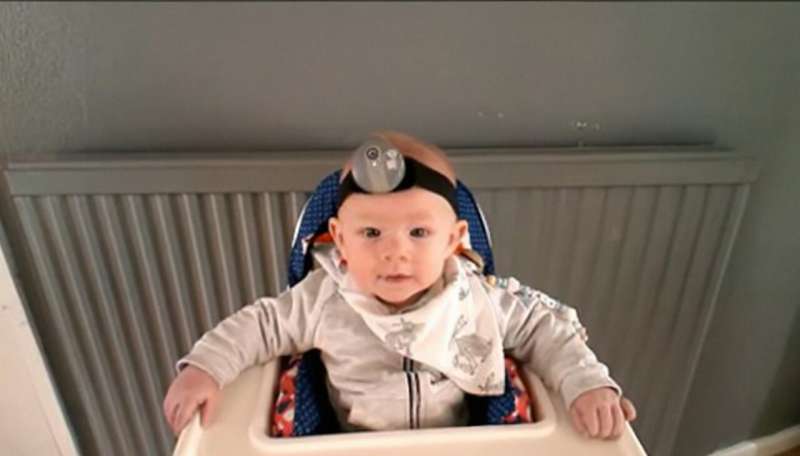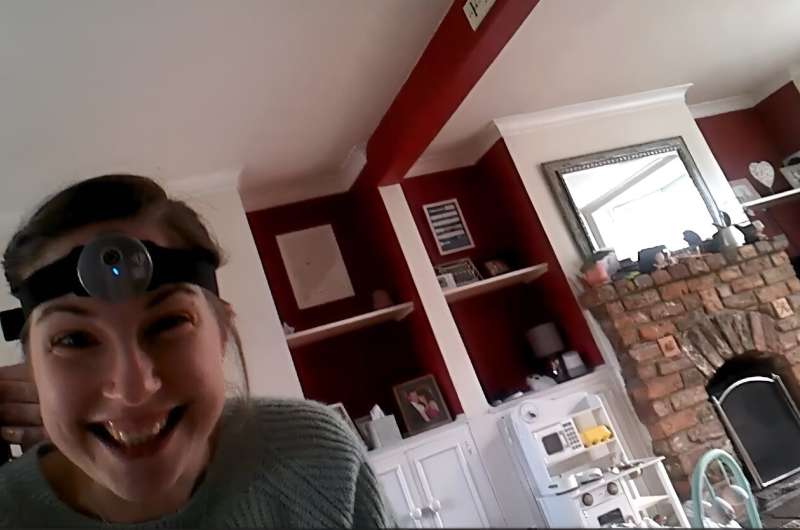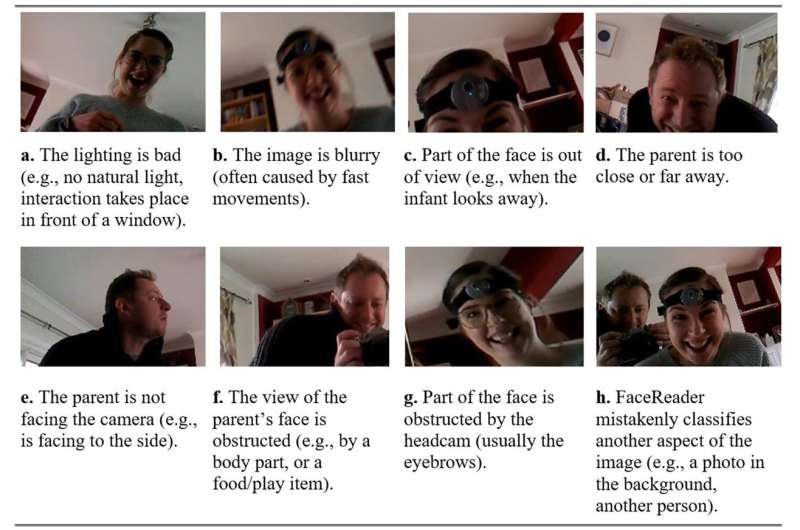This article has been reviewed according to Science X's editorial process and policies. Editors have highlighted the following attributes while ensuring the content's credibility:
fact-checked
peer-reviewed publication
trusted source
proofread
Software can detect hidden and complex emotions in parents

Researchers have conducted trials using a software capable of detecting intricate details of emotions that remain hidden to the human eye.
The software, which uses an "artificial net" to map key features of the face, can evaluate the intensities of multiple different facial expressions simultaneously.
The University of Bristol and Manchester Metropolitan University team worked with Bristol's Children of the 90s study participants to see how well computational methods could capture authentic human emotions amidst everyday family life. This included the use of videos taken at home, captured by headcams worn by babies during interactions with their parents.
The findings, published in Frontiers in Psychology, show that scientists can use machine learning techniques to accurately predict human judgments of parent facial expressions based on the computers' decisions.
Lead author Romana Burgess, Ph.D. student on the EPSRC Digital Health and Care CDT in the School of Electrical, Electronic and Mechanical Engineering at the University of Bristol, explained, "Humans experience complicated emotions—the algorithms tell us that someone can be 5% sad or 10% happy, for example.
"Using computational methods to detect facial expressions from video data can be very accurate, when the videos are of high quality and represent optimal conditions—for instance, when videos are recorded in rooms with good lighting, when participants are sat face-on with the camera, and when glasses or long hair are kept from blocking the face.
"We were intrigued by their performance in the chaotic, real-world settings of family homes. The software detected a face in around 25% of the videos taken in real world conditions, reflecting the difficulty in evaluating faces in these kind of dynamic interactions."

The team used data from the Children of the 90s health study—also known as Avon Longitudinal Study of Parents and Children (ALSPAC). Parents were invited to attend a clinic at the University of Bristol when their babies were 6 months old.
At the clinic, as a part of the ERC MHINT Headcam Study, parents were provided with two wearable headcams to take home and use during interactions with their babies. Parents and infants both wore the headcams during feeding and play interactions.
They then used an "automated facial coding" software to computationally analyze parents' facial expressions in the videos and had human coders analyze the facial expressions in the same videos.
The team quantified how frequently the software was able to detect the face in the video, and evaluated how often the humans and the software agreed on facial expressions.
Finally, they used machine learning to predict human judgments based on the computer's decisions.

Romana said, "Deploying automated facial analysis in the parents' home environment could change how we detect early signs of mood or mental health disorders, such as postnatal depression. For instance, we might expect parents with depression to show more sad expressions and less happy facial expressions."
Professor Rebecca Pearson from Manchester Metropolitan University, co-author and PI of the ERC project, explained, "These conditions could be better understood through subtle nuances in parents' facial expressions, providing early intervention opportunities that were once unimaginable. For example, most parents will try to 'mask' their own distress and appear 'ok' to those around them. More subtle combinations can be picked up by the software, including expressions that are a mix of sadness and joy or that change quickly."
Now the team plans to explore the use of automated facial coding in the home environment as a tool to understand mood and mental health disorders and interactions. This will help to pioneer a new era of health monitoring, bringing innovative science directly into the home.
Romana concluded, "Our research used wearable headcams to capture genuine, unscripted emotions in everyday parent-infant interactions. Together with the use of cutting-edge computational techniques, this means we can uncover hidden details that were previously unattainable by the human eye, changing how we understand parents' real emotions during interactions with their babies."
As an extension to the ERC project, headcam data is now being collected in teenagers, with the plan to use the same methods to understand complex teen emotions at home, via the Teencam Pilot Study of the Institute of Population Health, University of Liverpool.
Professor Nic Timpson, Principal Investigator for Children of the 90s, commented, "Bristol's families have been involved for decades in important health research and here they are pioneering new ways of studying mental health using this real-life headcam footage."
More information: R. Burgess et al, Quantifying the efficacy of an automated facial coding software using videos of parents, Frontiers in Psychology (2023). DOI: 10.3389/fpsyg.2023.1223806




















